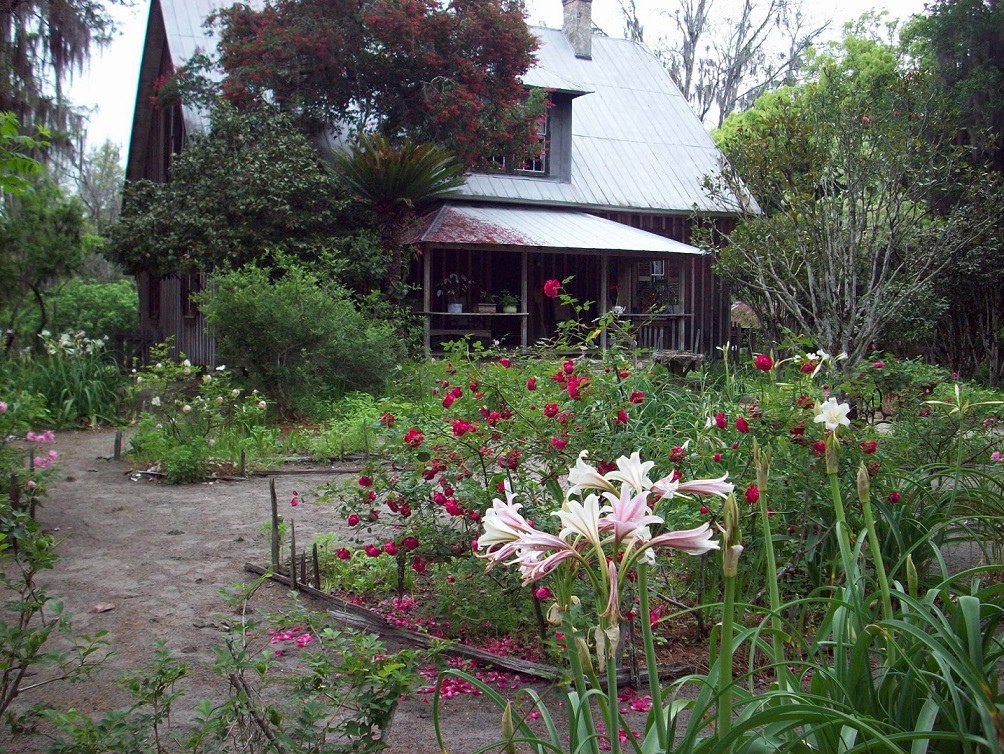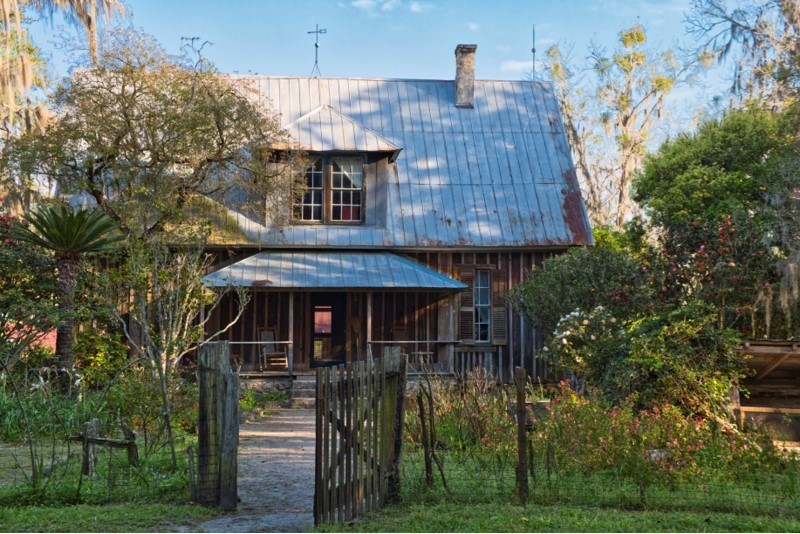Walking down an old, sunny and sandy road, you suddenly stumble upon a vernacular garden. What is vernacular you may ask? The dictionary defines it as something relating to or characteristic of a period, place or group. This garden style was used by many families in the South in the late 19th century. As you enter the gates, the garden welcomes you. Your senses are surrounded by sights, scents and sounds.

In front of the two-story wooden house is a dirt path lined with field stones, part of the farmstead’s yard. Kick off your shoes to truly connect with this place, feeling the dirt and sand trickling between your toes. Take the time to wander, admiring the many flowers that make up the front yard.
Warm spring rains cause the flowers to explode after a cold winter, with the whites, yellows and blues of the wild yellow tickseeds, bushy asters and spiderworts everywhere you look. The reds of the cultivated amaryllis and pinks of the antique roses are signs that this garden is a special place, treasured and cared for a very long time.

On a perfect blue-sky day, the front porch rocking chair beckons. You sit, rock, let your weary feet rest, and the day’s stress flows out of you as you gaze upon the rainbow of colors.
From the front porch you see cardinals and wrens flying in to bathe at the old birdbath you passed a few minutes ago. Rested, and wanting to contribute to the beauty you see around you, you decided to water the begonias sitting on the porch. After all, this is your state park “home,” and it depends on everyone who visits to keep it a wonderful place, a place where guests take a trip into the past.
